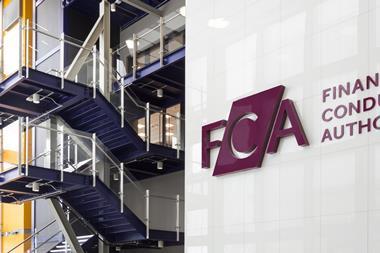Comparing asset management fees across firms, strategies and regions is not a simple task. There are frequently differences, sometimes large, in what asset managers state they charge in their marketing materials, and the fees they actually negotiate during due diligence and selection processes.

These differences can vary on region, asset class, investment size and other factors.
Having a better sense of the fees charged for different strategies, and how much discounting takes place, can benefit investors and managers.
For investors, this knowledge can help them make smarter decisions when selecting managers. An investor with unrealistic expectations about the fee discounts that might be negotiated might pass on an ideal manager with slightly higher fees in favour of a manager offering fee discounts that are beyond the norm. And if a manager is willing to lower fees it might be a red flag about its eagerness to win business.
For an asset manager, this kind of information can provide insights into the discounts, if any, on offer. It can suggest guidelines on what reasonable discounts look like, all other competitive factors being equal, allowing a manager to discount enough, but not too much, to win business.
As noted above, an investor might view a discount as a red flag. And winning business based on fee discounts that are not sustainable is not a path to long-term viability in any business.
We sought to bring transparency with our recent State of Institutional Fees report, in which we assess management fee data, exploring separate account fees and the differences in actual fees paid by public plan investors versus managers’ stated fees across multiple structures.
We looked at the stated management fees of 8,899 separate account structures within eVestment’s analytics platform, and 377 cases of actual fees paid by public plans and their corresponding managers’ stated fee comparisons, using public pension plan documents. The report covers average separate account management fees globally and in the Americas, Europe, Middle East and Africa (EMEA) and Asia-Pacific (APAC) across equity and fixed income strategies.
So what did we find? For equity strategies in the EMEA region, key findings included:
• Core is no longer the least-expensive style. Swiss all-cap core and euro-zone large-cap growth strategies charged the lowest separate account management fees, 0.43% and 0.50%, on the first unit.
• Large-cap is also not the least-expensive universe in the EMEA region. For EMEA strategies the all-caps universes typically charge the lowest fees – in contrast to US; Canadian; global; All Countries World Index (ACWI) ex-US; Europe, Australasia and Far East (EAFE); and emerging market (EM) strategies – which show large-caps charging the lowest fees as investment amounts expand. Europe ex-UK strategies tend to market the most consistent fees of all EMEA strategies, showing the least dispersion in the separate account management fees they charge on a $50m (€41.5m) investment.
Among EMEA fixed-income strategies findings included:
• The active/passive price gap within Europe fixed-income is the narrowest we have recorded. Of all the segments for which data is organised, the gap between passive Europe fixed-income and any relevant active universe – whether aggregate, core-plus and high-yield – is the narrowest of any equity or fixed-income segment.
• Larger allocations mute fee differentials. The difference in fees that Europe aggregate and core-plus strategies charge on the first dollar versus UK government is muted by the time investment exceeds $250m; the same happens to Europe high-yield and Europe secured loans strategies.
For global/multi-regional strategies, some key findings in equities include:
• The passive discount is narrower for global and EAFE strategies. Compared with the average difference between US-focused active and passive all-cap and large-cap strategies’ reported fees, the gap between global and EAFE active strategies and their passive competitors is meaningfully less.
• Core is the least expensive active option. Global, ACWI ex-US, EAFE and EM core strategies charge less in management fees on the first dollar invested than their growth and value peers, across all-cap, large-cap and small-cap subsets.
• Global and EAFE large-cap strategies report few differences in fee levels. Global large-cap and EAFE large-cap strategies have near-identical management fees for investment amounts over $10m, while at $250m, they differ by a basis point.
• There is less variation in fees reported by ACWI ex-US strategies compared with their global, EAFE and EM counterparts. Most (58%) of ACWI ex-US large-cap products charge between 0.65% and 0.75%, inclusive, at $50m, whereas 42% of EAFE local currency, 34% of global local currency and 26% of EM local currency charge in that range.
And in global/multi-regional fixed-income fees data, findings include:
• The active-passive cost gap is lower within fixed-income. We noted that within US equity the gap between what active managers state to charge versus the corresponding passive strategy was widest, then narrower within multi-region equities. The differences between active fixed-income and the corresponding passive products are narrower, however, for both multi-region and US fixed-income.
• Low turnover results in lower fees. Buy-and-maintain credit strategies – with low portfolio turnover invested in diversified investment-grade to capture illiquidity and premiums – offer the lowest stated fees among actively-managed global fixed income strategies on an investor’s first dollar.
• EM currency-focus is a cost differentiator. EM blended-currency products average higher fees than their hard currency, local currency, and even corporate debt-focused peers after a $1m investment.
• Marketed fees vary across unconstrained strategies but are consistent across multi-sector ones. Global unconstrained fixed-income and multi-asset credit fixed-income universes have the widest dispersion of fees charged at the $50m level; the EM blended-currency universe has the third widest.
• At a $50m investment, global multi-sector separate account management fees display the least dispersion among the fixed-income universes. The difference between the most expensive (0.52%) and least expensive (0.30%) fee is only 22bps.
As has been said before: knowledge is power. That pearl of wisdom is true for many things, and certainly true about asset management fees. While some may chafe at transparency, data informs better decisions. Finding the data to understand investment fees can be difficult, but is worthwhile.
Peter Laurelli is global head of research at eVestment
































No comments yet